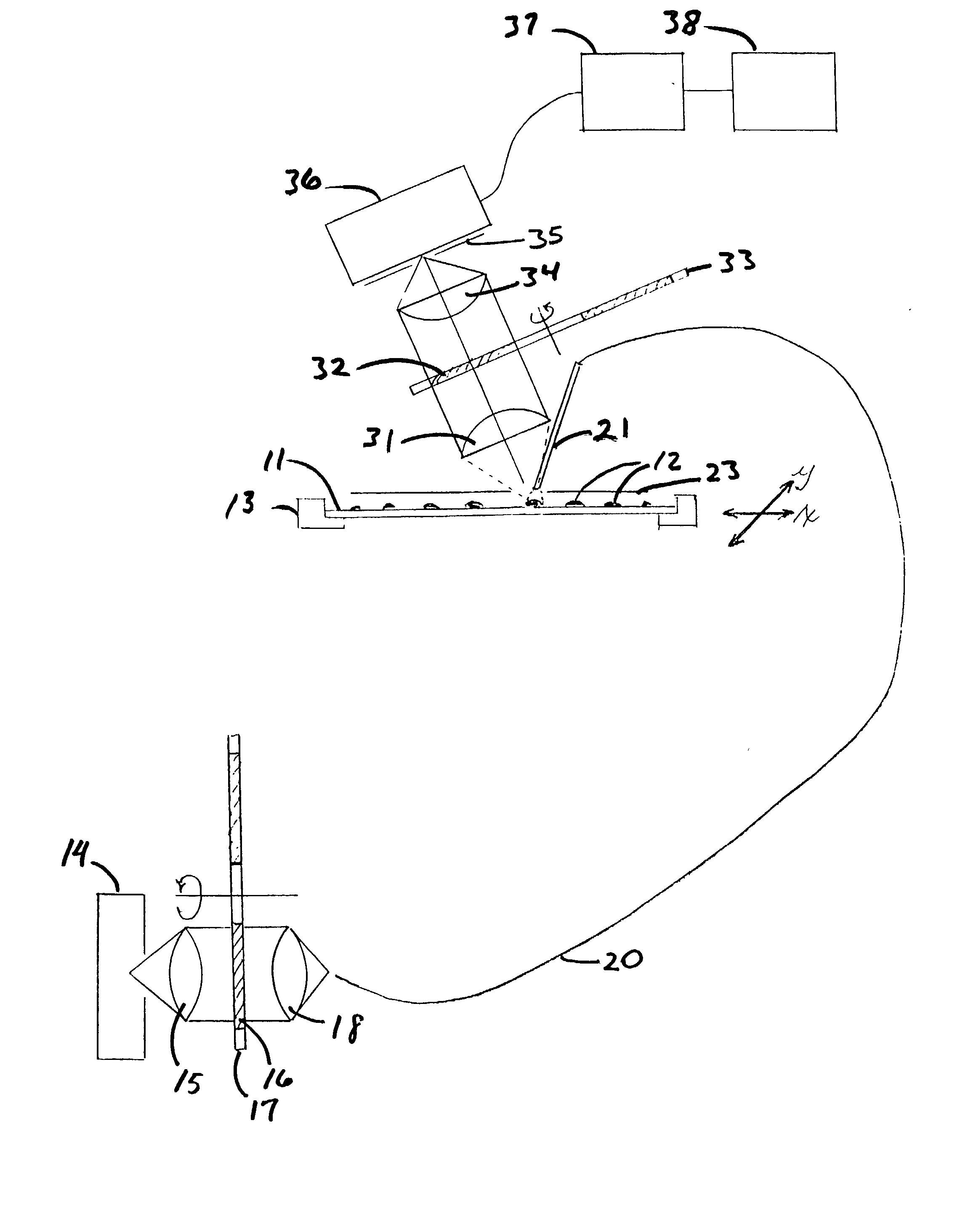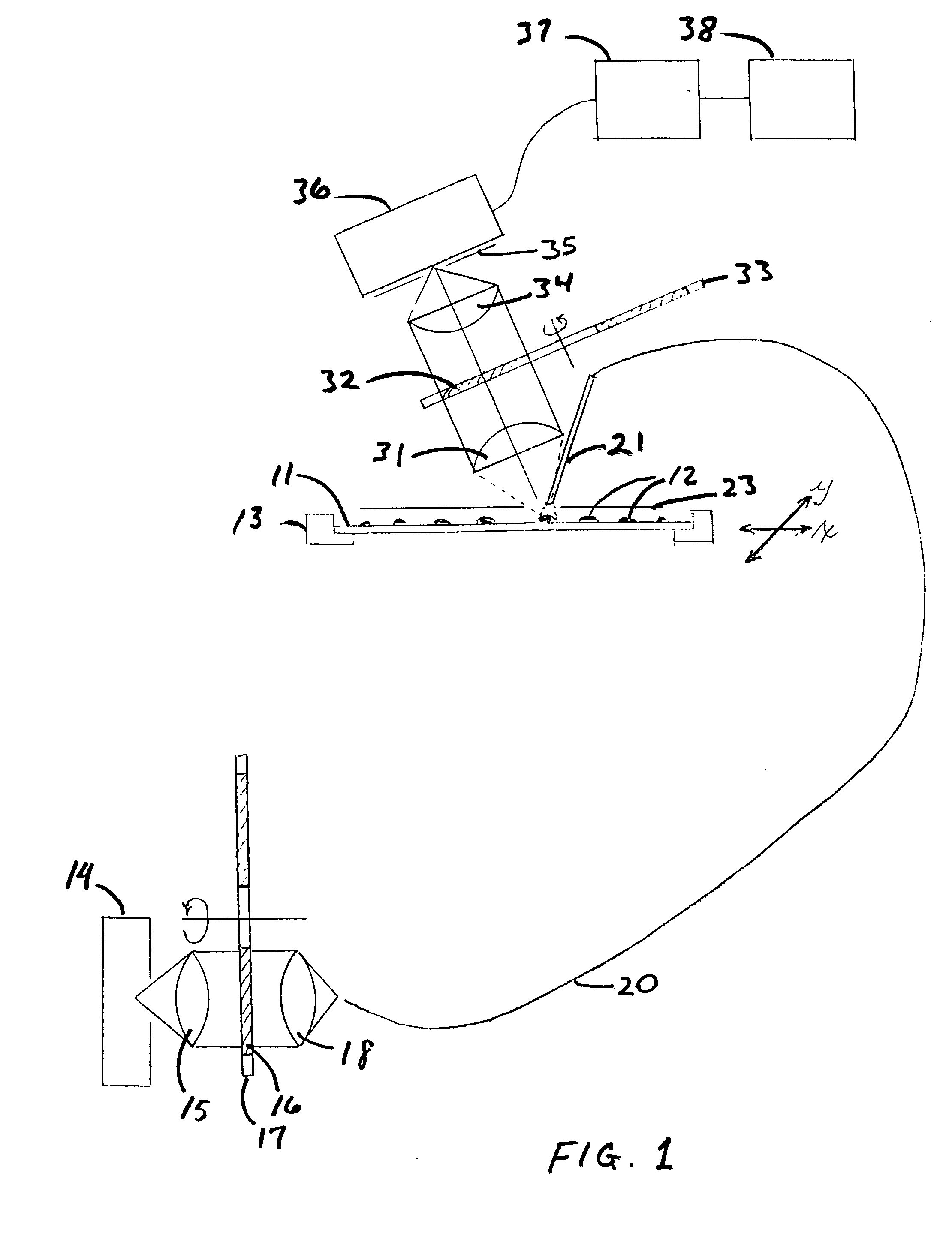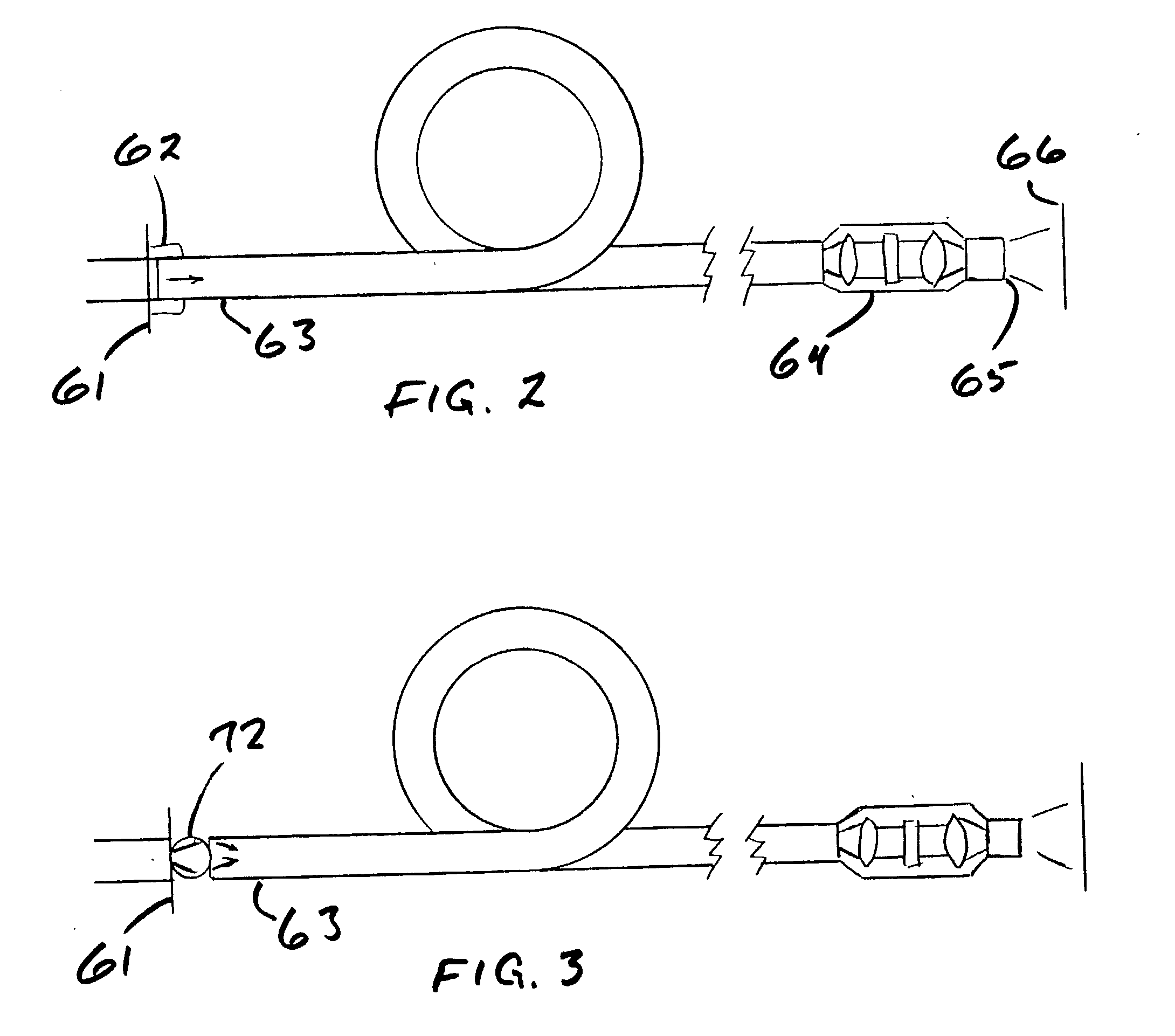Imaging of microarrays using fiber optic exciter
a fiber optic exciter and microarray technology, applied in the field of microarray imaging, can solve the problems of affecting the efficiency of dichroic optical filter efficiency, affecting the detection and resolution of resulting images, and affecting the efficiency of the system with a common laser path,
- Summary
- Abstract
- Description
- Claims
- Application Information
AI Technical Summary
Problems solved by technology
Method used
Image
Examples
Embodiment Construction
[0015] Microarrays are generally planar arrays, typically two-dimensional rectangular arrays, of microdots, referred to herein as "spots," each spot measuring at most 500 microns in diameter and containing a test specimen to be analyzed by chemical or biochemical assays for either diagnostic or screening purposes. The most common such specimens are nucleic acid segments, although biological species of various kinds have been used and can be used here as well. The spots in a microarray are processed in parallel in accordance with the analyses, the spots containing labels such as fluorophores to indicate the successful specimens. Microarrays of this type are typically deposited on a flat, inert, and often light-transmissive substrate such as a microscope slide. Other microscopic arrays include bio-chip ("lab-on-a-chip") technologies and electrophoresis sequencing readers that include microscale and / or nano-scale fluidic channels. Examples of microarray devices of this type are those a...
PUM
 Login to View More
Login to View More Abstract
Description
Claims
Application Information
 Login to View More
Login to View More - R&D
- Intellectual Property
- Life Sciences
- Materials
- Tech Scout
- Unparalleled Data Quality
- Higher Quality Content
- 60% Fewer Hallucinations
Browse by: Latest US Patents, China's latest patents, Technical Efficacy Thesaurus, Application Domain, Technology Topic, Popular Technical Reports.
© 2025 PatSnap. All rights reserved.Legal|Privacy policy|Modern Slavery Act Transparency Statement|Sitemap|About US| Contact US: help@patsnap.com



